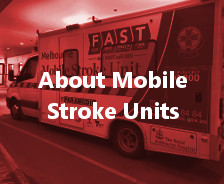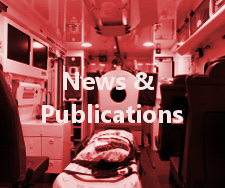



Research involving Mobile Stroke Units is expanding rapidly for this approach to stroke care, with large randomized trials in Europe and the U.S. reporting results, and new studies underway or planned in Australia, France, Germany, Norway, and the U.S. Mobile stroke research studies planned or underway include:
The first part of the ‘‘Berlin-Prehospital Or Usual Care Delivery (B_PROUD)’’ study in Germany, started in 2017, and reported results in February 2020. This prospective quasi-randomized study with allocation according to availability of the Berlin Stroke Emergency Mobile (STEMO) vehicles, included all patients with focal neurological symptoms at arrival of first EMS vessel, a final diagnosis of ischemic stroke or TIA and no contra-indication to either thrombolysis or endovascular therapy (ET). These selection criteria were designed to avoid bias of different stroke severity scores in both arms as a consequence of differing assessment times. Enrollment of approximately 1500 treatment candidates was planned over a 2–3 year period including blinded follow-up assessment at 3 months (www.ClinicalTrials.gov NCT02869386). Part 2 of the study of functional stroke outcomes after mobile stroke unit deployment – the revised protocol for the Berlin Prehospital Or Usual Delivery of acute stroke care trial, Berlin Prehospital Or Usual Delivery of Acute Stroke Care 2.0 (B_PROUD 2.0), started enrollment in 2019 (www.ClinicalTrials.gov NCT03931616).
The ‘‘Benefits of Stroke Treatment Using a Mobile Stroke Unit Compared to Standard Management (BEST-MSU)’’ trial is a prospective multi-centered cluster randomized (by weeks) comparative effectiveness study investigating outcomes and cost/benefits of MSU implementation compared to Standard Management in the US. This study was designed to minimize bias by enrolling patients as similarly as possible on MSU vs. control weeks and adjudicating all patients’ study eligibility by an independent investigator blinded to MSU vs. control group assignment. All patients have been followed for a full year to gather data on resource utilization and costs. Finally, outcomes are patient-centered including quality of life, and modified Rankin score weighted by utility scores derived from actual patient preferences. The trial has planned enrollment of more than 900 tPA-eligible patients (www.ClinicalTrials.gov NCT02190500).
In Norway, enrollment began in 2017 in the “Prehospital Advanced Diagnostics and Treatment of Acute Stroke (Treat-NASPP)” trial. The objective of this study is to investigate the effectiveness of prehospital diagnosis and, when appropriate, of intravenous thrombolytic treatment of ischemic stroke. It includes an explorative study with the aim to further improve the intervention by biomarkers, and outcome measures volumetric measured by MRI images. (www.ClinicalTrials.gov NCT03158259).
Researchers at the University of Colorado have begun a study of biomarkers in acute ischemic stroke utilizing the university’s mobile stroke unit. The study, “Evaluation of ultra-early microRNA and metabolomic biomarkers in acute ischemic stroke” will enroll patients initially at a single center to evaluate cellular and molecular biomarkers of acute stroke and cerebral inflammation, with planned expansion to mobile stroke units at other medical centers in the U.S.
In France, the ‘‘Acute Stroke: Prehospital versus in-Hospital initiation of recanalization Therapy’’ (ASPHALT) study will be a randomized controlled trial of MSU deployment versus standard care, aiming to assess the cost-utility of an MSU for stroke management in the era of bridging therapy. Randomization will be performed on an individual patient basis. Two geographic areas in France will be involved. The study will recruit 450 acute ischemic stroke patients over a 3-year period, with a blinded follow-up of one year.
In Australia, enrollment has begun for the “Stopping Haemorrhage With Tranexamic Acid for Hyperacute Onset Presentation Including Mobile Stroke Units (STOP-MSU)” trial. The trial includes patients with acute spontaneous ICH, who are ≥18 years of age and are eligible for treatment within 2 hours of stroke onset. Patients eligible for the RCT will be randomized in a 1:1 ratio to receive either Tranexamic acid or placebo stratified by treating center and utilizing randomly permuted blocks of random size. (www.ClinicalTrials.gov NCT03385928).
In the UK, a study is planned of mobile stroke units for treatment of acute stroke patients at the emergency site. This study involves a collaboration between the East of England Ambulance Service Trust (EEAST) and Saarland University Medical Center, Homburg, Germany.
The objective of the rFVIIa for Acute Hemorrhagic Stroke Administered at Earliest Time (FASTEST) Trial is to establish the first treatment for acute spontaneous ICH within a time window and subgroup of patients that is most likely to benefit. Our central hypothesis is that rFVIIa, administered within 2 hours from onset with an identified subgroup of subjects most likely to benefit, will improve outcomes at 180 days as measured by the modified Rankin score (mRS) and decrease ongoing bleeding, as compared to placebo. The rationale for this study is that there is no scientifically proven treatment for acute ICH. We will perform a global, Phase III, randomized, double-blind controlled trial of rFVIIa plus best standard therapy vs. placebo and best standard therapy alone. We will include subjects with a volume of ICH ≥ 2 and < 60 cc, with no IVH or a small volume of IVH (IVH score ≤ 7), age 18-80 (inclusive), Glasgow Coma Scale of ≥ 8, and treated within 120 minutes from stroke onset or last known well. To minimize time-to-treatment, the study will use exception from informed consent (EFIC) in the U.S., emergency research informed consent procedures globally, and mobile stroke units (MSUs), with a goal of ½ of patients treated within 90 minutes, as accomplished in the NINDS t-PA trials. At approximately 115 hospital sites and 15 MSUs in the NINDS-funded StrokeNet and key global institutions with large volumes of ICH patients and ability to treat within 2 hours of onset/last known well, we plan to recruit 860 participants over 3½ years. Countries participating in the trial include the United States, Canada, Japan, Germany, United Kingdom, and Spain.
